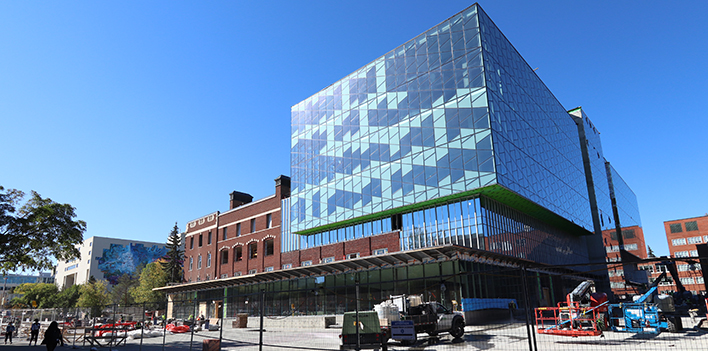Six sustainability considerations for a building envelope-first approach
- Détails

Sustainable design advances a building’s positive environmental qualities and reduces its negative impacts on the environment. As earth’s population continues to degrade living conditions on our planet, building design, construction, and operation professionals need to respond with sustainable structures that are also healthy, resilient, accessible, and cost effective.
The building envelope is a primary component of any building, as the interface between differing outdoor and indoor environments. Features include shelter, energy efficiency, air quality, moisture control, fire resistance, cost effectiveness, durability, and aesthetics.
The main objectives of sustainable, building envelope first design are to avoid resource depletion of raw materials, energy, and water, to prevent environmental degradation caused by operation demands of buildings and their infrastructure throughout their life cycle. The definition of sustainable envelope design is ever changing, but there are six integral principles that nearly all professionals agree with.
Resilient design
The local climatic conditions (moisture, humidity, wind, temperature) influence the materials of construction of the building envelope and the energy performance strategies for the building. Buildings are built in many sub-optimal locations, and building envelope design responds with increased performance where adverse micro-climates and unfavourable exposures may be present at the site. Interior comfort is demanded by occupants, and shielding provided by the building envelope reduces energy demands of heating and cooling systems. Resilience requires that the building envelope be designed for changing conditions on our planet, which likely requires resistance to increasingly extreme weather events, as well as efficient performance in a warming climate.
Optimize energy use
A sustainable building envelope should rely on efficiency and passive design measures for its operation as much as possible and includes features such as spectrally selective glazing, thermal insulation, solar shading devices, building integrated photovoltaics (BIPV) and passive ventilation in order to meet or exceed applicable energy performance standards. The building commissioning process includes the building envelope to determine that performance requirements related to energy efficiency, such as air tightness, are met.
Use sustainable materials
Sustainable building envelopes should be constructed of materials that optimize service life and minimize life-cycle environmental impacts. Considerations include length of service life, global warming potential of materials, resource depletion, human toxicity, as well as embodied energy and GHGs due to materials acquisition, manufacturing, packaging, transportation, installation, use and reuse/recycling and/or disposal. Look to eliminate materials that have short Design Service Life, are pollutants or toxic during their manufacture, use, or reuse, and consider the use of building envelope assemblies that can be deconstructed and re-used at the end of the building service life.
Enhance indoor environmental quality
The indoor environmental quality of a building has a significant impact on occupant health, comfort, and productivity. Increased air tightness and better thermally broken systems better control energy losses, but must be met with corresponding improvements in ventilation and indoor quality. Daylighting is an important feature of indoor environments, and energy efficiency can be maintained by using high performance glazing systems that control energy flow while maintaining high levels of visible light transmission.
Optimize operational and maintenance practices
Incorporating operations and maintenance considerations into the design of a building envelope contributes to operational efficiency over its lifetime. Building occupants and operators should be appropriately trained in a comprehensive preventative maintenance program to keep all building systems associated with the building envelope functioning as designed.
All different types of buildings can incorporate high performance and sustainable building envelope strategies and systems. Sustainable design, construction and operations are universally beneficial and contribute to an envelope-first approach to building design. Firstly, mechanical loads are minimized by performance of the envelope components, and secondly, heating and cooling are supplied only when comfort margins are exceeded. The Passive House standard reflects a high level of performance where buildings draw minimal amounts of energy for their operation
Retrofit existing buildings
Canada needs to retrofit many of its existing buildings in order to achieve our GHG emissions commitments. Building envelope retrofit strategies have evolved to the point where houses and buildings can be retrofitted while fully occupied, and brought up to the performance levels associated with Passive House standard. Retrofit strategies are an important part of the construction industry’s future, since nearly all inefficient buildings in Canada have already been built.
It is usually more sustainable to renovate or retrofit an existing building or facility than to tear one down and construct an entirely new one. Retrofitting of building envelope systems to existing buildings reduces the environmental footprint of construction by re-using structure and other building components rather than sending them to landfill.
Improvements to building envelope systems reduce concerns related to air infiltration and leakage, moisture diffusion, surface condensation, and rainwater entry - issues that can negatively impact the building's energy performance and indoor environmental quality.